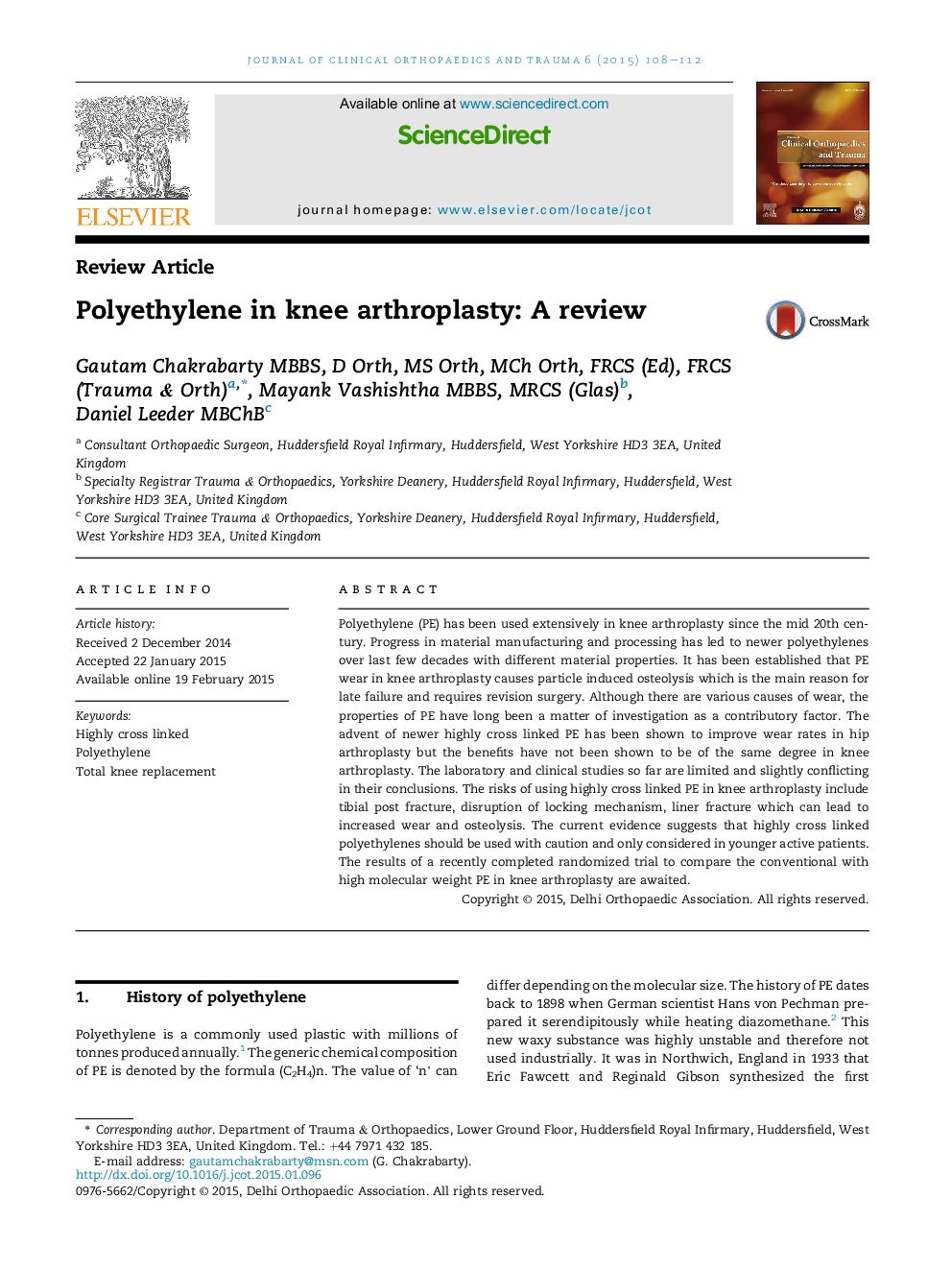| Article ID | Journal | Published Year | Pages | File Type |
|---|---|---|---|---|
| 3245353 | Journal of Clinical Orthopaedics and Trauma | 2015 | 5 Pages |
Polyethylene (PE) has been used extensively in knee arthroplasty since the mid 20th century. Progress in material manufacturing and processing has led to newer polyethylenes over last few decades with different material properties. It has been established that PE wear in knee arthroplasty causes particle induced osteolysis which is the main reason for late failure and requires revision surgery. Although there are various causes of wear, the properties of PE have long been a matter of investigation as a contributory factor. The advent of newer highly cross linked PE has been shown to improve wear rates in hip arthroplasty but the benefits have not been shown to be of the same degree in knee arthroplasty. The laboratory and clinical studies so far are limited and slightly conflicting in their conclusions. The risks of using highly cross linked PE in knee arthroplasty include tibial post fracture, disruption of locking mechanism, liner fracture which can lead to increased wear and osteolysis. The current evidence suggests that highly cross linked polyethylenes should be used with caution and only considered in younger active patients. The results of a recently completed randomized trial to compare the conventional with high molecular weight PE in knee arthroplasty are awaited.
